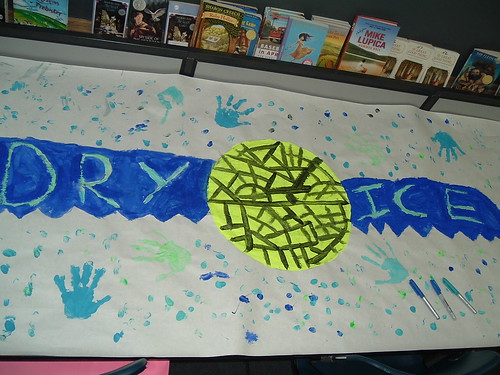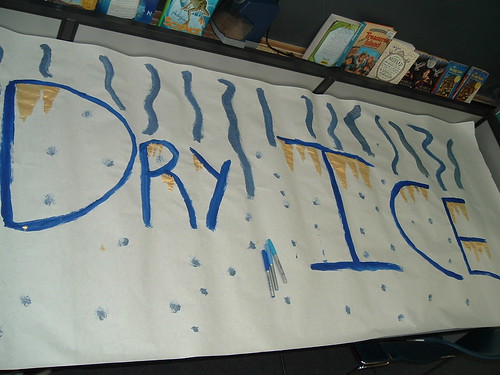In my role as a technology liaison with the Western Massachusetts Writing Project (under the umbrella of the National Writing Project), I love to think of the possibilities for both our site and the teachers at our site. I envision blogging, podcasting, movie making, networking across many platforms, collaborative wiki writing and more. All of this would be done on solid pedagogical ground, of course, with the tool being less important than the purpose.
But reality often intrudes on this vision, and at our New England Writing Project Retreat this weekend, I once again began to doubt ideas that I have about teachers being ready to dive in. I have long thought that we were at a tipping point, but now … I don’t know. This creeping doubt does not come from the NEWP retreat itself, which was productive and helpful and a great exchange of ideas, but from a general sense that the education community has little idea about what to make of the technology that kids are using in their lives. It’s hard to explain exactly why I have pessimism when I am usually so optimistic. (It might still be echoes of our WMWP workshop around technology that we had to cancel due to lack of interest).
Paul Oh and Andrea Zellner gave a cool presentation about the Pedagogy of the Socially Networked, and it sparked some real neat discussions, but I didn’t get the sense that there was a whole lot of momentum to bring these ideas back to our sites, which is where we reach teachers, which is where we reach students. I think part of my feeling because I think most of the folks in the room don’t quite grasp the power of these connected points in our digital lives (even with the fun activity we did to map out our own personal social networks on paper). I certainly am somewhat generalizing here and everyone was trying to make some sense of the discussions.
Paul and Andrea did not sugar-coat the topic, either, making note of some of the concerns (how companies are monetizing the social networking experiences, the targeting of young people who are not yet adept at critically viewing media, etc.) while trying to show that this kind of online experience in people’s (and kids’) lives are not likely to go away, and in fact, are more prevalent than ever and will continue to be so. Therefore, as teachers, we have an obligation to understand it and, if possible, to use social networking concepts with our students. Andrea made a great point about how you could still teach the theories and ramifications of such networks, even without a computer in the classroom. (One idea: using sticky notes to denote “tags” and nodes of shared interest).
I think part of my reservation about meaningful progress is that while we, those who are deep into technology, know what might be helpful for students in our no/low-tech-experienced colleagues’ classrooms, in the end, it is 0ur colleagues themselves who need to “see the light” and take the plunge. We can’t do it for them. (Although, a strong case can be made for finding ways to partner up with mentors on this issue) And we teachers know that if someone — some expert — comes in the room and says “do it that way,” we shake our heads with frustration and resist. We need to develop our ideas ourselves for those ideas to take real root.
And the reality is that if national and state standardized testing does not reflect multi-modal writing, longer range projects with tech components, authentic language of youths, and more, than it is unlikely to get the kind of push and support that is necessary to change classroom practice. It’s a twist on the old “trickle down theory,” even though we often talk about changing education from the ground up. We need the support of principals in this endeavor.
If at all possible, I am feeling both optimistic and pessimistic, and trying to keep my mind leaning towards the possibilities, not the roadblocks.
Peace (in a head of doubt),
Kevin


